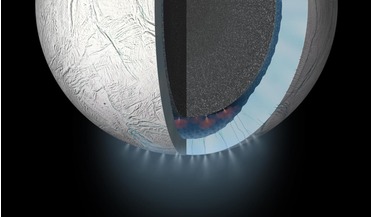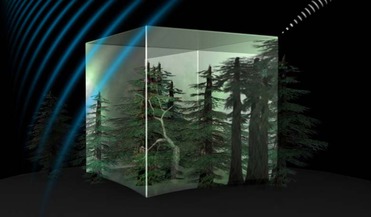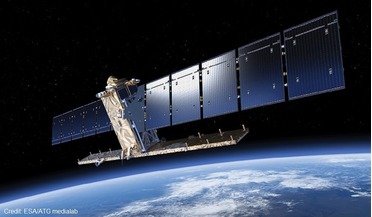 24 January 2020
New study suggests Enceladus' oceans more habitable than previously thought
24 January 2020
New study suggests Enceladus' oceans more habitable than previously thought
.... Now a team at the Southwest Research Institute, Texas has developed a new geochemical model that reveals that carbon dioxide (CO2) from within Enceladus may be controlled by chemical reactions at its seafloor; results that build on previous studies...
 14 January 2022
Eco fuel to power Orbex rocket
14 January 2022
Eco fuel to power Orbex rocket
...clean-burning propane produced from renewable feedstocks such as plant and vegetable waste material. This reduces carbon dioxide emissions by up to 80 per cent compared to sourcing conventional liquefied petroleum gas (LPG) from fossil sources. Calor...
 December 2014
Terraforming Mars: from CFCs to Total Recall
December 2014
Terraforming Mars: from CFCs to Total Recall
...a challenging task. The greenhouse effect involves absorption and re-emission of outgoing infrared radiation by a planet’s atmosphere. On Earth, carbon dioxide (CO2) and water vapour (H2O) are the two main greenhouse gases. Together, they raise Earth...
 March 2015
JAXA’s challenge to climate change
March 2015
JAXA’s challenge to climate change
...orbit. However, when the Kyoto Protocol was agreed at COP3 in 2002, technology was needed to verify reductions in carbon dioxide (CO2) emissions. A decision was made to change the mission completely in order to monitor tropospheric CO2 absorption and...
 05 May 2016
Contract signed by Airbus, Space UK and ESA to deliver Biomass satellite
05 May 2016
Contract signed by Airbus, Space UK and ESA to deliver Biomass satellite
... flies at an altitude of 660 km. It will measure biomass at a resolution of 200 m and deforestation at 50 m to analyse how much carbon dioxide is being absorbed by the world's forests and to provide a better insight into rates of habitat loss and the...
 October 2015
Copernicus, ESA’s most ambitious Earth Observation programme
October 2015
Copernicus, ESA’s most ambitious Earth Observation programme
... fluorescence in terrestrial vegetation; and CarbonSat2—a proposed 3 to 5 year mission—that will measure global atmospheric amounts of carbon dioxide (CO2) and methane (CH4 ) with high spatial resolution and coverage1, which can be used to improve...